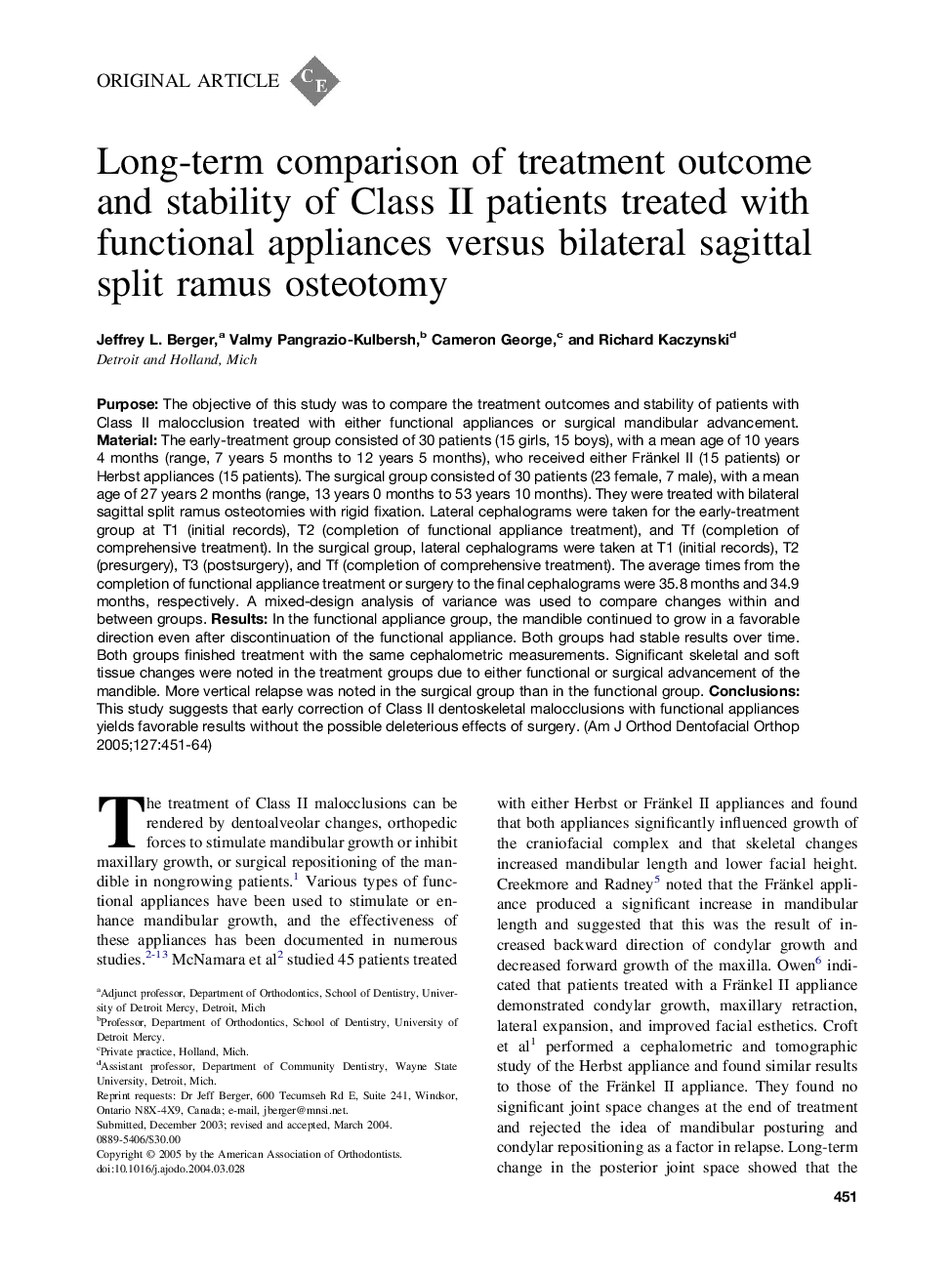| Article ID | Journal | Published Year | Pages | File Type |
|---|---|---|---|---|
| 9992990 | American Journal of Orthodontics and Dentofacial Orthopedics | 2005 | 14 Pages |
Abstract
Purpose: The objective of this study was to compare the treatment outcomes and stability of patients with Class II malocclusion treated with either functional appliances or surgical mandibular advancement. Material: The early-treatment group consisted of 30 patients (15 girls, 15 boys), with a mean age of 10 years 4 months (range, 7 years 5 months to 12 years 5 months), who received either Fränkel II (15 patients) or Herbst appliances (15 patients). The surgical group consisted of 30 patients (23 female, 7 male), with a mean age of 27 years 2 months (range, 13 years 0 months to 53 years 10 months). They were treated with bilateral sagittal split ramus osteotomies with rigid fixation. Lateral cephalograms were taken for the early-treatment group at T1 (initial records), T2 (completion of functional appliance treatment), and Tf (completion of comprehensive treatment). In the surgical group, lateral cephalograms were taken at T1 (initial records), T2 (presurgery), T3 (postsurgery), and Tf (completion of comprehensive treatment). The average times from the completion of functional appliance treatment or surgery to the final cephalograms were 35.8 months and 34.9 months, respectively. A mixed-design analysis of variance was used to compare changes within and between groups. Results: In the functional appliance group, the mandible continued to grow in a favorable direction even after discontinuation of the functional appliance. Both groups had stable results over time. Both groups finished treatment with the same cephalometric measurements. Significant skeletal and soft tissue changes were noted in the treatment groups due to either functional or surgical advancement of the mandible. More vertical relapse was noted in the surgical group than in the functional group. Conclusions: This study suggests that early correction of Class II dentoskeletal malocclusions with functional appliances yields favorable results without the possible deleterious effects of surgery.
Related Topics
Health Sciences
Medicine and Dentistry
Dentistry, Oral Surgery and Medicine
Authors
Jeffrey L. Berger, Valmy Pangrazio-Kulbersh, Cameron George, Richard Kaczynski,
